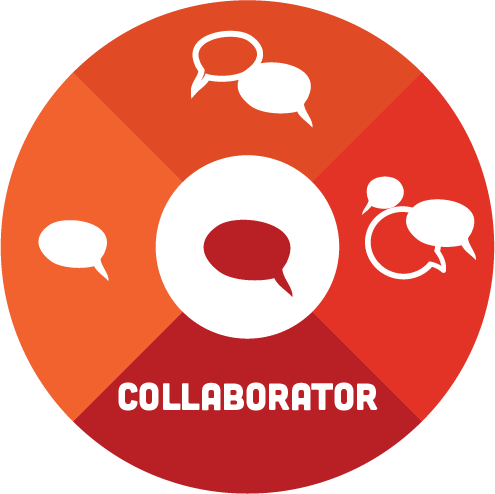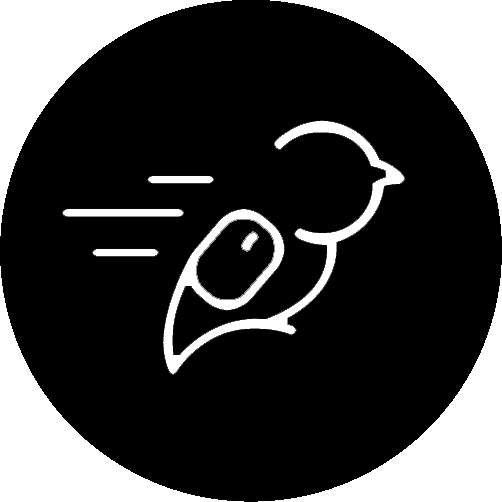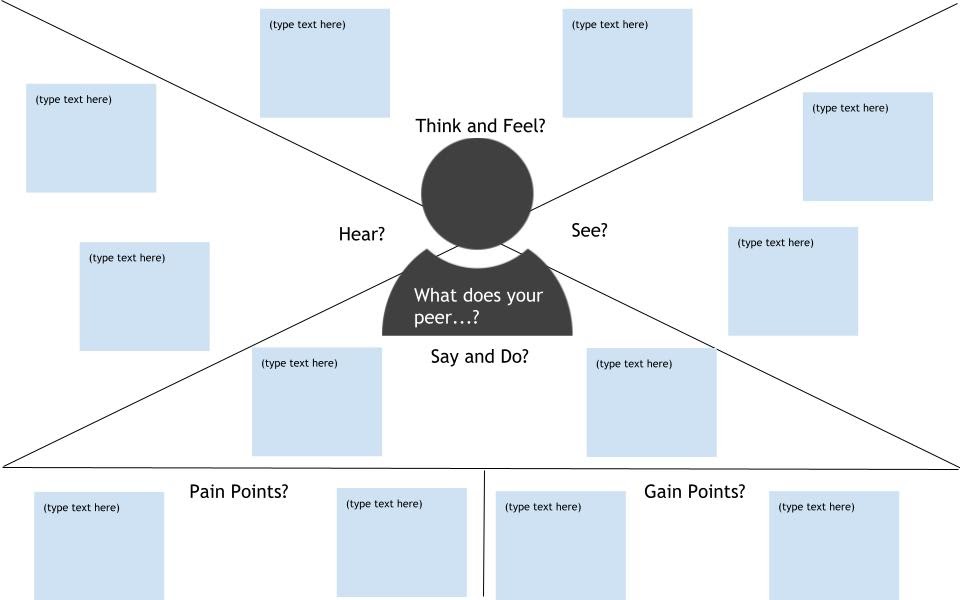

 In This Section
In This Section
We’ll have a look at the following topics:
- How to give constructive feedback to peers
- How to be open to diverse perspectives (culturally sensitive)
- How to collaborate with empathy (empathy skill-building)
- Positionality – what it is and why it’s important
And work towards meeting these outcomes:
- Giving meaningful and constructive feedback to peers
- Choosing to embrace and consider other perspectives
- Discovering strategies for developing collegial and empathetic relationships
- Describing what positionality is and why it is important to collaboration
Giving Constructive Feedback using the “Sandwich Method”
When formulating your feedback, you should be approaching it with positive intentions and constructive feedback, as a supportive communication tool to address specific issues or concerns.
To make your feedback more helpful, you should base your feedback off the individual’s behaviour rather than your interpretations or assumptions about how they perform. You should focus on things that can be changed or improved, rather than something that may be out of the other person’s control. Remember, when providing feedback, you have a real opportunity to be helpful. Providing feedback is not just a learning moment for the person you are critiquing, but also one that helps you learn problem-solving. It may be the case that things you pointed out are things that you also have been working on, so it can be beneficial to you both.
 When providing feedback, think of how you would like to be critiqued. Don’t begin it by instantly bombarding the other person with the issues you want to address. You want to begin with some positive comments regarding the situation in question. This first compliment is usually general, we can call this the bottom bun. Then you want to get a bit more specific and point out at least two strong points that the person excelled at. Now here is when things get a bit cheesy. Here you must clearly deliver your criticism. One trick you can use is by thinking about how you would like to be made aware of a mistake or area that requires further attention. Then you can remind the person again of their strong points. Finally, you can finish up the sandwich with a second bun on top, by giving thanks for your peer’s hard work and offering support.
When providing feedback, think of how you would like to be critiqued. Don’t begin it by instantly bombarding the other person with the issues you want to address. You want to begin with some positive comments regarding the situation in question. This first compliment is usually general, we can call this the bottom bun. Then you want to get a bit more specific and point out at least two strong points that the person excelled at. Now here is when things get a bit cheesy. Here you must clearly deliver your criticism. One trick you can use is by thinking about how you would like to be made aware of a mistake or area that requires further attention. Then you can remind the person again of their strong points. Finally, you can finish up the sandwich with a second bun on top, by giving thanks for your peer’s hard work and offering support.
Overall, the sandwich method works for both parties. It enables both you and your peer to feel better about the situation. It will make your peer feel as if all that hard work didn’t go to waste– they have done great so far, but that there is still room for producing even better work.
Being Open to Diverse Perspectives
Hearing diverse perspectives can be difficult, especially when they directly challenge your own beliefs and values. However, it’s important not to become defensive when you are presented with different opinions. Being open to diverse perspectives not only makes everyone feel heard and understood, but also helps to broaden your worldview and makes you think outside the box. A major reason for diverse perspectives is cultural diversity. A person’s culture is shaped by personal experiences, such as ethnic and racial identity, religion, age, educational level, body size, heritage and family tradition, physical and cognitive abilities, sexual orientation, gender identity, and geographic and socioeconomic experiences.[1][2]
What is cultural sensitivity?
Cultural sensitivity is a key component of becoming open to diverse perspectives. According to the American Psychological Association (2020), cultural sensitivity is defined as “awareness and appreciation of the values, norms, and beliefs characteristic of a cultural, ethnic, racial, or other group that is not one’s own, accompanied by a willingness to adapt one’s behavior accordingly.” By becoming more culturally sensitive, you’ll be able to better understand other people’s perspectives and behaviours and how to respond appropriately.[3]
How to be culturally sensitive
- Learn about your worldview and your biases
Learning about your worldview includes thinking about how your background, experiences and heritage has shaped who you are. Compare yourself to other people with a similar heritage and notice how there are differences between you (e.g., someone of the same ethnicity may have differing beliefs and values due to upbringing). Furthermore, analyze your own perspective, prejudices, biases and stereotypes regarding other cultures. It can be difficult to question your own beliefs and worldview. However, you are more likely to embrace alternative cultures if you understand your own culture and misperceptions you may hold.[4]
- Learn about other cultures
The best way to learn about other cultures is to draw from various sources of knowledge. For instance, you can take a formal course at school (e.g., an Indigenous studies or world cultures course), you can read books or academic journal articles by diverse authors, watch documentaries regarding other cultures, learn a second language, travel to other places, or even use social media as a way to learn and connect to other cultures. However, it’s important to recognize that not all information you come across is accurate. Social media, TV and movies can potentially perpetuate harmful stereotypes and prejudices about other cultures. Hence, try to do your own research to validate the information you come across.[5][6]
- Learn by asking questions
Although you can learn about other cultures, it’s impossible to become an expert on every culture. In addition, every person experiences their culture differently. Hence, even if you think all people from a certain heritage behave a certain way or have specific customs, the particular person that you’re dealing with may not. To clarify any assumptions, take a curious approach by asking them about their traditions, customs and everyday life. This way, you can better assess their own perspective and avoid offending them.[7][8]
- Avoid Pitfalls
- Don’t be defensive when corrected about cultural terms, customs or expectations.
- Don’t demand or expect other people to educate you on their culture or customs. Not everyone is open to talking about their culture, so it’s important to accept that the other person may feel uncomfortable.
- Don’t take defensiveness personally. People of other cultures may feel less empowered or comfortable opening up.
- Don’t stop learning! Becoming truly culture conscious is an ongoing process. Engaging with people from other cultures can be fun and is the best way to understand diverse perspectives.[9][10]
 How to Lead and Collaborate with Empathy
How to Lead and Collaborate with Empathy
If you’ve taken the time to read all of The Wicked Problems uncovered and shared by learners during the Liberated Learner development, there are many common threads. One that stands out is the critically important skill of empathy. Molly Flindall-Hanna’s story “In Their Shoes” tells of her “learning to walk in the shoes of my clients in the field of cultural safety,” in “Le Mouton Noir,” Matilde Chagnon tells of finally feeling barriers lifted after conversations with a student life aid who truly listened without judgement and took on her perspective to find solutions. And empathy is just that – perspective taking, judgement-free and taking in the emotions and feelings of others and communicating it back to them in a way that helps, not hinders. This animated video from RSA Shorts illustrates this best:
The link below provides a transcript of the Brené Brown on Empathy Video.
Brené Brown on Empathy Video Transcript (opens a new Microsoft Word document).
Let’s break down those skills again on how you can be a better empath when you’re collaborating with others.
Perspective Taking
Perspective taking is at the very heart of empathy. We normally learn how to take on another’s perspectives from our parents or primary caregivers while growing up. And the unfortunate reality is that the more your perspective aligned with the dominant culture (in Canada that would be white, Christian, educated, middle class, and heterosexual), the less you likely learned about perspective taking. All of our characteristics and experiences influence how we see the world – our own truth – which is different and unique for each of us. Perspective taking is viewing and listening to others’ truths and acknowledging it as true. It is the “art of looking at a situation through the identity lens and experiences of the person having the experience – not through your own identities/experiences.” [11]
Learning more about another person can help you to imagine what life feels like for them – how they may respond to different situations and circumstances. This is a skill – you need to have the ability to feel, share, interpret and understand emotions in order to ‘put yourself in their shoes’ in order to see the world from their perspective. This can be difficult for some as you need to be able to imagine attitudes, expectations, and intentions that could be quite different from your own.
How can you build your perspective taking skills?
You can build your skills on seeing things more clearly from another’s viewpoint through a few simple measures:
- Be an active listener and ask more questions of others. We all find that person who talks non-stop about themselves a tad annoying. Consider how you converse and connect with others and modify it to open yourself up to learning more about the other person.
- Read fiction books. Yes, this can be difficult to do as a student, as you might at times be overwhelmed with course-related reading. But fiction (particularly dramatic fiction) can transport you to become emotionally and empathically invested in a story and take on the perspective of the characters in the book.
- Watch dramatic films. If fiction books aren’t your thing, consider watching dramatic movies – a more subdued film about relationships can teach you more about emotions and empathy than a slapstick comedy. And plus – who doesn’t love the movies?
How can you stay out of judgment?
In the RSA short, Brene Brown points out that when you judge another person’s feelings it discounts their experience – and sometimes this is a defense mechanism to protect ourselves from their pain. If we are honest with ourselves, we all can recount a time where someone was sharing their pain caused discomfort for us and perhaps even made us think to ourselves ‘why are they getting so upset?” – or worse, commenting something along the lines of “it’s no big deal.” But empathy is not about you – it is about others – and staying out of judgment means you have to push down any feelings or comments that invalidates the other person’s experience.
A Judgment-Free Self
You can build your judgment-free self in many ways – but here’s a few to try:
- Keep a “judgment journal.” Over a period of a few days, take stock of when you catch yourself thinking (or saying) negative thoughts about someone else and ask yourself what prompted this reaction. You may start to notice some patterns.
- Rethink your reactions. If you are working with someone who seems distracted, instead of thinking “Fran is so lazy.” you could reframe this as “I wonder why Fran is so preoccupied? Maybe she has something going on in her life that is causing her to act this way.”
- Take a social media hiatus. Social media can be a festering ground for public judgment. We’ve all gotten riled up by social media posts at one point or another – and perhaps even drawn into a comments section battle with a complete stranger (or bot!). This often has zero positive outcomes and rarely results in changed behavior. But you can change yours by taking a break, or if that’s too difficult, “hide’ the posts or feeds that may get you the most riled up.
How can you better identify what that person is feeling?
Understanding others is a cornerstone of empathy. Think about the last time you went to the doctor when you were unwell. You likely were trying to convey your symptoms but a good physician would also be trying to figure out your emotions and using those to make a better diagnosis. It’s not just about words in a conversation, it is all the various other methods we have of communicating.
You can better understand what a person is feeling by
- Notice the non-verbal or sub-text. Observing their body language, tone of voice, and other non-verbal elements of communication can directly impact interpretation and meaning behind the words spoken. This can be difficult when engaging with people digitally – in this case you should notice sub-text.
- Listen – actively and closely. Steven Covey, author of The 7 Habits of Highly Effective People: Powerful Lessons in Personal Change, once said “Most people do not listen with the intent to understand; they listen with the intent to reply.” Simple measures such as holding eye contact, nodding and saying “mmmhmm” can subtly encourage others to continue to share their thoughts.
- Make what you say meaningful – and not about you. Reflecting and paraphrasing what they said back to them can also help create a better understanding. Asking questions can also help clarify. Avoid comparing their experiences to yours. We sometimes think bringing up a similar anecdote is helpful, but it can discount and minimize the experience they are sharing with you
How can you demonstrate care that the person is feeling what they are feeling?
Showing that you care about others and their feelings can build trust and engagement in any relationship – be it personal, academic or professional. It’s one thing to say you care about others, but it is another to act upon it through your daily interactions with others. All of the earlier tips on building empathy apply here – listening, asking questions, and showing interest in what people are saying.

Activity: Building an Empathy Map
This exercise asks you to empathize with a person —in whatever situation – could be as part of a group project, your family, your roommate, your co-workers —to identify an approach to guide how you can better collaborate with them. For this purpose, we will identify that person as your peer, but really it can be anyone – you can even use this exercise to identify characteristics and experiences for a group of people. You are going to create an empathy map! What does an empathy map look like? Here is an example that you can use as a template:

Create an empathy map following these steps:
- Reflect on all of the information you know about your peer(s). Try and utilize the information that you have already acquired or know to be true through conversations, text exchanges, emails and other forms of formal or informal communication. You might even want to schedule a time to have a conversation to uncover more details about that person and their experiences.
- Ask/gather information about what your peer(s) think, feel, say, do, see, and hear. What might they have challenges with, in your collaborative context??
- Think about the various experiences of your peer(s). What notions around access, ability, inclusion, and diversity can help better design your collaborative practices so that it is useful to all?
- What are pain points and gain points? Basically, pain points are anything particularly difficult to overcome (ex. All my classes are in the evening, and it is the worst time for me to learn!), and gain points are anything particularly helpful (ex. I love that classes are recorded!)
- Reflect on the information and/or feedback you have collected from your peers and begin sketching your empathy map.
- To use the template, select the following link: Empathy Map Google Doc, find the File menu on the Google document (upper left pull-down menu) and select “download” to save the file. Rename the file for yourself and complete the template.
- After your Empathy Map is complete, try to get additional feedback by seeking out a friend to discuss your empathy map with them. See if there are shared concerns, or perhaps strategies they might suggest that you have not considered.
An Example
See an example response here (opens in a new browser window).
What do I do with this?
If you are playing along using the Liberated Learner Work Binder, upload your Empathy Map file to the Collaborator Module folder by taking a picture of it (if done on paper)
If you’re just practicing the activities, save the file anywhere you wish.
Positionality
What is your Positionality?
“Positionality refers [to how] differences in social position and power shape identities and access in society” (CTLT Indigenous Initiatives, n.d[12]). Our positionality derives from different facets of our social and political contexts and the ways in which we identify ourselves in terms of gender, sexuality, race, ethnicity, class and ability status. The different social and political markers we carry as part of our identity influence the ways in which we view and function within our society (Ladson-Billings, 1995[13]; Gay, 2013[14]). As such, everything we put into the world also stems from this same lens – our positionality (Hamachek, 1999 as cited by Gay, 2013).
Why is knowing your positionality important?
Knowing your positionality is extremely important as it gets you better acquainted with yourself, your social and political context, and your beliefs. Understanding your positionality gives you insight on the lens through which you view the world, as well as your position within the world and its systematic structures. Your positionality will in turn allow you to recognize your privilege, as well as manage your biases and the ways in which they are manifested in your everyday interactions and behaviors. Your positionality also allows you to examine and manage the existing power dynamics within different interactions, which can help you to find your voice in order to advocate for yourself and support others. Knowing your positionality means constantly engaging in self-reflection that allows you to both learn about the social plights of our day and age and unlearn the status quo which systematically marginalizes those who do not belong to the “dominant group” defined by colonial history.

Activity: Positionality Identity Tree
Purpose of Activity
The purpose of this activity is to develop/become more aware of your positionality by exploring all of the things that relate to your identity.
Task
Reflect on yourself by thinking of all the past and current aspects and experiences that have shaped who you are. Present your findings in an identity tree and reflect on what this means in regard to your positionality, privilege, and interactions.
Level 1
Sketch out an identity tree: start by writing your name in a circle at the center of a piece of paper, then link the various aspects of your identity to your name. Aspects of your identity include your cultural and linguistic backgrounds, education, employment, context you grew up in (Where? Parents/guardians? Siblings? etc.), sexuality, socio-economic class, hobbies, skills, likes and dislikes, travel, etc. (10-15 mins in length).
Level 2
Now that you’ve sketched out your identity tree, think about what it means to you. Did it help you realize or re-discover anything about yourself? What opportunities and/or limitations did your identity tree present in regard to your privilege? What kind of person would you like to be moving forward? Write your thoughts in a short paragraph (5-10 mins in length).
Level 3
Think about what your identity tree could mean in regard to others. Consider what your identity tree tells others about you and what are its implications within different interactions. For instance, what are you bringing to the table and what power dynamics are at play when speaking to different groups? What aspects of yourself should you try and be cognizant of when interacting with others? Write your reflections in a short paragraph. (5-10 mins in length)
Learning Outcomes
- Developing a better understanding of self by reflecting on one’s positionality.
- Demonstrate an understanding of the implications of one’s positionality.
- Developing an awareness of inherited power dynamics within different interactions.
Time Commitment
This activity should take approximately 15 – 30 minutes to complete.
How to Complete This Activity
- Think of the different components that make up your identity.
- Make your identity tree by writing down the different components on a piece of paper or using any of the following software: Mindmup , Text2MindMap, OneNote, or Google Draw
- Reflect on what your identity tree means to you, its implications, and who you want to be.
- Type your reflections.
Success Criteria
- Sketch an identity tree.
- Honest and genuine reflection.
- Developing your positionality and a better sense of self
- Understanding one’s opportunities and/or limitations in regard to their privilege.
- Consider potential power dynamics in different contexts and ways to manage them.
An Example
See an example response here (opens in a new browser window).
What do I do with this?
If you are playing along using the Liberated Learner Work Binder, upload your identity tree file to the Collaborator Module folder by taking a picture of it (if done on paper)
If you’re just practicing the activities, save the file anywhere you wish.
 Wrap Up and Look Ahead
Wrap Up and Look Ahead
In this section, you’ve explored how to be the best ally you can be. Next, you will take everything you’ve learned so far, and try to put it to use as you work to broaden your own personal learning network.
- https://www.pta.org/docs/default-source/uploadedfiles/guide-to-cultural-awareness-iii ↵
- https://blog.schoox.com/the-value-of-embracing-different-perspectives-at-work/ ↵
- https://dictionary.apa.org/cultural-sensitivity ↵
- https://classroom.synonym.com/can-person-culturally-sensitive-others-perspectives-21353.html ↵
- https://classroom.synonym.com/can-person-culturally-sensitive-others-perspectives-21353.html ↵
- https://www.apa.org/gradpsych/2010/09/culturally-competent ↵
- https://www.mentalhealthfirstaid.org/2019/07/five-ways-to-be-more-culturally-aware/ ↵
- https://classroom.synonym.com/can-person-culturally-sensitive-others-perspectives-21353.html ↵
- https://www.onlinemswprograms.com/resources/social-issues/how-to-be-culturally-sensitive/ ↵
- https://thetempest.co/2016/07/24/culture-taste/culture/5-steps-anyone-can-take-to-become-more-culturally-sensitive/ ↵
- (https://health4u.msu.edu/articles/2019-the-basic-building-blocks-of-empathy) ↵
- CTLT Indigenous Initiatives. (n.d). Positionality & intersectionality. The University of British Colombia: Vancouver Campus. https://indigenousinitiatives.ctlt.ubc.ca/classroom-climate/positionality-and-intersectionality/ ↵
- Ladson-Billings, G. (1995). Toward a theory of culturally relevant pedagogy. American Educational Research Journal, 32(3), 465–491. ↵
- Gay, G. (2013). Teaching To and Through Cultural Diversity. Curriculum Inquiry, 43(1), pp. 48-70. ↵


